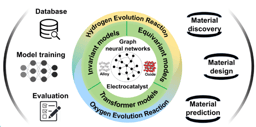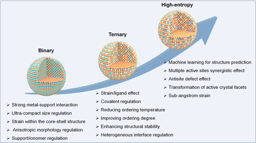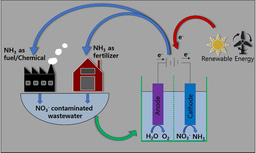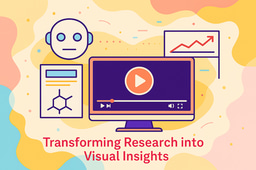Catal Talks: Prof. Qingsong Huang, Associate Editor

Explore the Research

Catal
Catal is a fully open access journal for the dissemination of advances in catalysis across a wide range of fields. • Prioritizes works on critical…
Sichuan University, China
Area of Interest:
Photocatalysis, Electrocatalysis, Li-Ion Batteries, Energy Storage and Conversion, 2D Materials
Could you briefly introduce your academic and research background? What led you to focus on photocatalysis, electrocatalysis, and energy storage technologies?
Prof. Qingsong Huang:
My research has consistently focused on low-dimensional materials—particularly graphene and its derivatives—and their applications in energy storage and conversion. The interdisciplinary nature of these materials, which span physics, chemistry, and engineering, naturally guided me toward photocatalysis, electrocatalysis, and lithium-ion batteries.
How do you see photocatalysis and electrocatalysis contributing to the development of sustainable energy systems?
Prof. Qingsong Huang:
Catalysis lies at the core of clean energy technologies. Photocatalysis enables solar-driven chemical reactions, while electrocatalysis plays a vital role in processes such as hydrogen evolution and CO₂ reduction. Our team focuses on designing nanostructured catalysts—like MoS₂ heterojunctions and MXene-based materials—that exhibit high activity and stability. These materials can significantly enhance energy conversion efficiency and reduce dependence on fossil fuels.
What are the current challenges in lithium-ion battery research, and what directions is your team exploring to address them?
Prof. Qingsong Huang:
Key challenges include energy density, cycle life, and safety. We are working on modifying silicon-carbon anodes and developing novel two-dimensional materials with tailored mesoporous structures to improve ion transport and structural stability. Our aim is to push the boundaries of battery performance while ensuring scalability and cost-effectiveness.
Looking ahead, what scientific questions or technologies are you most excited about? If resources were unlimited, what project would you pursue?
Prof. Qingsong Huang:
I’m particularly fascinated by halogen-based two-dimensional materials such as iodene and astatene, which we’ve explored theoretically. With sufficient resources, I would pursue their experimental synthesis and investigate their applications in optoelectronics and catalysis. These materials have the potential to revolutionize energy conversion technologies.
As an Associate Editor for Catal, what qualities do you look for in a strong manuscript? And what are some of the key challenges you face in your editorial role?
Prof. Qingsong Huang:
A strong manuscript should present a clear scientific question, rigorous methodology, and meaningful conclusions. While novelty is important, reproducibility is equally critical. One of the main challenges is ensuring fair and timely peer review while maintaining high standards. Innovation often involves unconventional approaches, so it’s essential to evaluate such work with both an open mind and scientific rigor. I rely on a diverse pool of reviewers and encourage constructive feedback that helps authors improve their work.
Could you tell us which article from Catal’s recent publications interests you most, and what are your thoughts on this work?
Prof. Qingsong Huang:
One article that stood out to me is “Shape-directed CuNi@Pt-Cu nano-octahedra for enhanced formic acid electrooxidation.” It presents a compelling strategy for core–shell catalyst design, focusing on morphological control during rapid shell growth to address gaps identified in previous studies. The authors achieved excellent electrocatalytic performance by refining the synthesis of Pt-alloy shells on CuNi cores. What’s particularly impressive is the balance between performance and cost—reducing platinum content while enhancing durability. This work sets a strong precedent for future fuel cell catalyst development.
Follow the Topic
-
Catal

Catal is an open access journal covering full spectrum of catalysis critical advances. From biocatalysts to heterogeneous catalysts, it integrates fundamental and applied sciences. Catal offers a primary platform for researchers and practitioners in the field.
Related Collections
With Collections, you can get published faster and increase your visibility.
Bio-Catalysis in Circular Bioeconomy and Green Chemistry
This collection emphasizes the role of bio-catalysis in advancing the circular bioeconomy, focusing on enzymatic transformations and eco-friendly processes that valorize renewable feedstocks. Contributions should highlight innovative applications of bio-catalysis in waste-to-value systems, biorefineries, and green chemical synthesis.
Catal invites research articles, reviews and reports on the topic of the development of enzymes, metabolic engineering, and integration of bio-catalysis into industrial processes, aiming to reduce dependency on fossil-based resources and promote sustainable practices.
Publishing Model: Open Access
Deadline: Dec 31, 2025
Nanocatalysis and Thermocatalysis in Precision Chemical Synthesis
This collection, hosted by Catal, highlights the intersection of nanocatalysis and thermocatalysis in precision chemical synthesis. It aims to disseminate cutting-edge research that drives innovation in catalytic materials, selective processes, and reaction pathways, fostering advancements in the production of fine chemicals and specialty compounds. Aligned with Catal's mission to prioritize impactful catalytic applications, this collection welcomes contributions from established and early-career researchers that advance both theoretical and applied catalysis.
The collection embraces the breadth of Catal’s coverage, including topics such as nanostructured catalysts, thermocatalytic processes, and advanced synthesis strategies. Contributions may explore catalytic mechanisms, computational modeling, or experimental breakthroughs, offering insights into scalable industrial applications and fundamental research. Articles types—original research, reviews, perspectives, and analyses—are all encouraged, ensuring a diverse platform for sharing high-impact advancements in catalysis.
Publishing Model: Open Access
Deadline: Dec 31, 2025






Please sign in or register for FREE
If you are a registered user on Research Communities by Springer Nature, please sign in